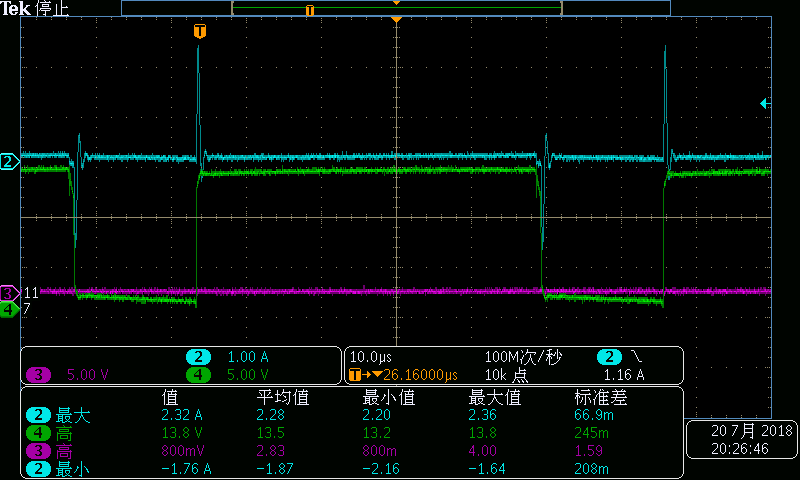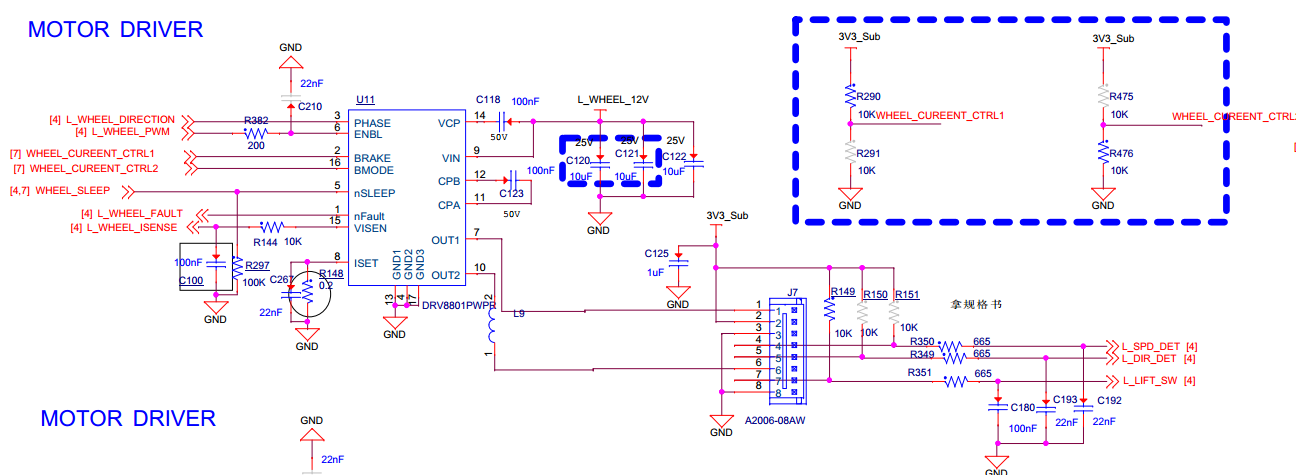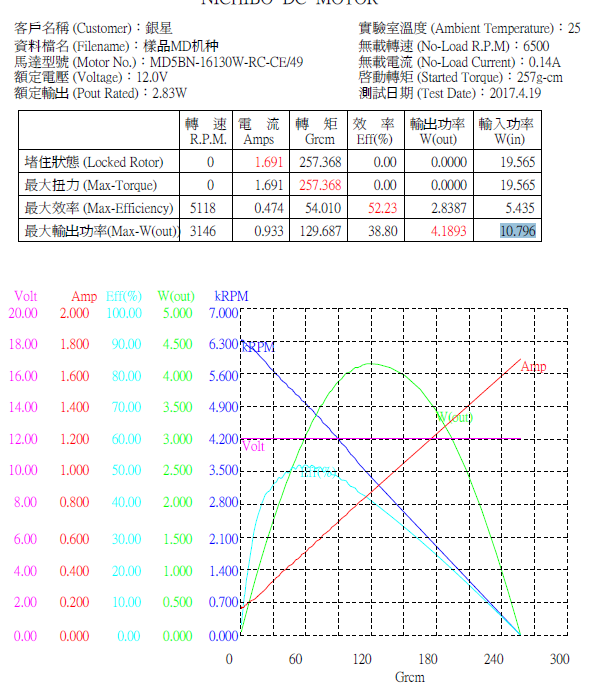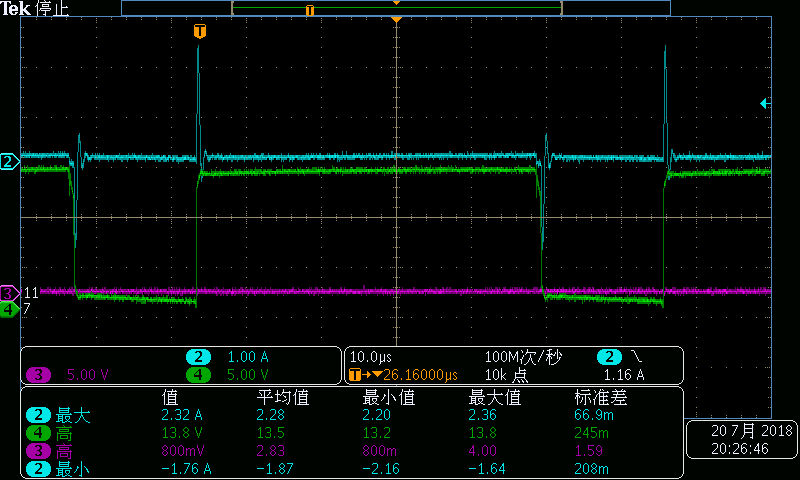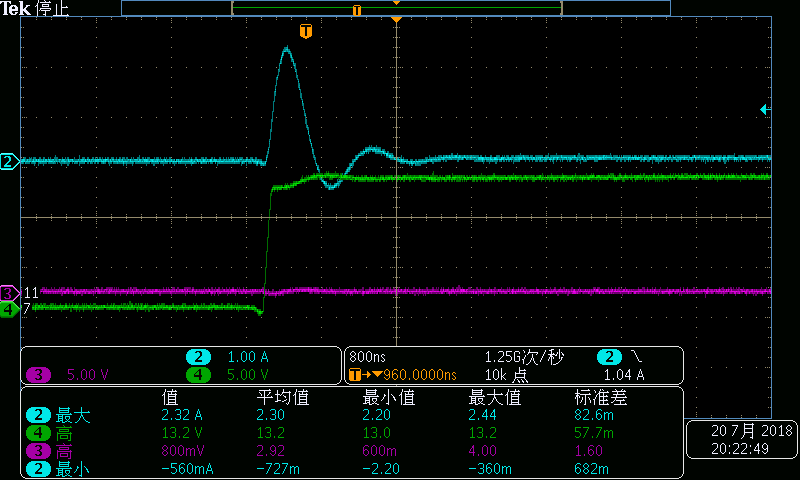Hi Team,
One of the customer has the reverse current issue, the reverse current can go to -1.76A which is a little high.
They are wondering:
1. What could be the reason of the high current?
2. Is it possible to reduce the reverse current? If so, how to do it?
Could you please help to analysis and give some suggestions? Thank you!
Here is the waveform:
CH2: Current; CH3: OUT2 voltage; CH4: OUT1 voltage
The schematic is as follows: the brushed motor is powered by 4 cell battery and the PWM frequency is 16kHz


